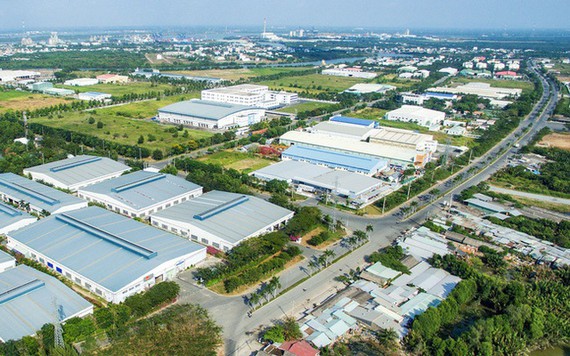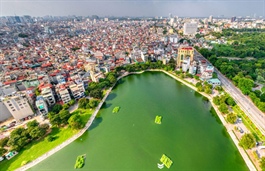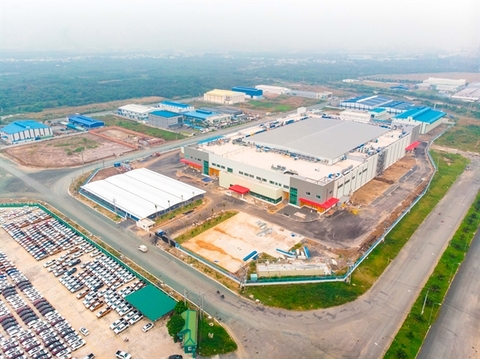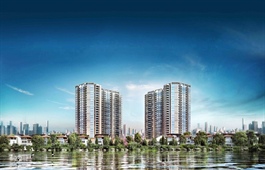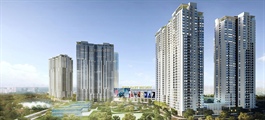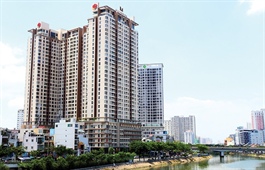Sharp fall in industrial zone real estate stocks
Sharp fall in industrial zone real estate stocks
Soon after the results of the US presidential election were announced, several industrial zone real estate stocks fell sharply. However, earlier the industrial zone real estate stocks had shown positive results, mainly because of expectation of many businesses moving out of China and investing in Vietnam.
Illustrative photo.
|
New catalyst for change
According to Jones Lang Lasalle (JLL), a global consulting firm, although the Covid-19 pandemic has made it difficult for global economy to grow, it is also a new catalyst that can help in promoting a strong transition in production in times to come. This need for transition in production has been accelerating day by day due to continued trade tensions. The failure of the global production supply chain has made many businesses realize the urgency of diversifying production, and avoiding dependency on one resource or one country.
Hence, Vietnam is fast becoming the country that is attracting businesses shifting from China. Vietnam’s low operating costs and tax incentives are luring more and more business enterprises to move operations here. According to a report, compared to other countries in the Southeast region such as the Philippines, Indonesia, Malaysia, Thailand, and Myanmar, Vietnam has a competitive advantage because of low rental, lower labor costs, abundant energy, and plenty of land mass for factories. Vietnam has also reduced corporate income tax from 22% to 20% since 2016 and companies in industrial zones can enjoy many other incentives, such as tax exemption for two to four years, tax reduction from three to fifteen years, and also exemption in import tax.
According to the Ministry of Planning and Investment, by the end of the second quarter, Vietnam will have 336 Industrial Parks (IPs) covering a total area of 97,800 hectares, of which 261 Industrial Parks will be fully operational. The average occupancy rate in IPs was 76% by the end of the first six months of 2020. In the North, IPs are concentrated in Bac Ninh, Hai Phong, Hanoi, Quang Ninh, Hung Yen, and Vinh Phuc provinces, covering a total area of 13,500 ha. In the first six months of the year, the occupancy rate in IPs was 75% and the average rental price was USD 85 to USD 90 per sq. m.
In the South, the new industrial park land lease is still facing several problems due to compensations and site clearance procedures. The industrial zones are located in Ho Chi Minh City, Binh Duong, Ba Ria-Vung Tau, Tay Ninh, Binh Phuoc, and Long An Provinces covering a total area of 42,836 ha. In the first six months of the year, the average occupancy rate of industrial zones had reached 83% with land rental cost at USD 105 to USD 115 per sq. m. However, according to Mr. Le Trong Hieu, Director of CBRE Vietnam, a consulting firm for Industrial Real Estate, rental price for industrial land is increasing at an unprecedented rate. Two of the major cities, Hanoi and Ho Chi Minh City, lead in increased rental rates, while land space in Industrial Parks in the South and the North increased by 20% to 30%. The reason for this increase in rental price comes from increased demand and limited supply.
Increase in land rental
Many industrial real estate businesses recorded extremely impressive results in the third quarter of the year due to this increase of rental rates. For example, Hiep Phuoc Industrial Park Joint Stock Company (HPI) showed profit in this period of VND 115 bn, a 23 times increase since the same period in 2019. This result is due to an increase of 525% in land rental revenue. Other revenue from water supply, wastewater treatment, accommodation rental also increased by 30%. In the first nine months, HPI saw a profit of VND 131 bn, up by 30%, and exceeding 103% of the planned target for the whole of 2020.
The Thong Nhat Joint Stock Company (BAX) also recorded a surge in the third quarter with profit after tax being about fourteen times more than in the same period last year, and reaching VND 121 bn. This quarter saw the highest revenue and profit since the listing of BAX on the stock market in 2017. In the first nine months, BAX recorded VND 135 bn of profit, up by 94%, and exceeding 25% of the plan for the whole of 2020.
Similarly, Becamex IDC, a leading Industrial Infrastructure developer in Vietnam, also recorded double-digit growth in the third quarter with VND 631 bn, up by 20%, and accumulated profit of nine months of VND 1,282 bn, 38% higher than the yearly target. Remaining companies also recorded prosperous profit growth in the third quarter, such as the Saigon VRG Investment Joint Stock Company (SIP) with profit of VND 252 bn, up by 26%; the Tan Tao Investment and Industry Joint Stock Company (ITA) with profit of VND 113 bn, up by 66%; Thanh Dat Development Investment Joint Stock Company (DTD) saw profit go by 212%, while the Vinh Phuc Infrastructure Development Joint Stock Company (IDV) saw profit touch VND 57 bn, up by 189%.
However, there are still companies showing negative growth, or even reporting losses in the last quarter, such as the Kinh Bac Urban Development Corporation (KBC). According to the financial statement of the third quarter, KBC saw a loss of nearly VND 9 bn, while the profit was at VND 110 bn in the same period last year. This is the first quarter the corporation has suffered losses in seven years. In the first nine months, KBC profit was VND 96 bn, down by 85%. Enterprises with negative profit growth in the third quarter include the Sonadezi Chau Duc Joint Stock Company (SZC); Idico Corporation (IDC); Sonadezi Industrial Park Development Corporation (SNZ); and the Binh Long Rubber Industrial Park Corporation (MH3).
Rise in uncertainty
Although profits in many companies have declined, the expectation that the US-China trade war will move businesses to Vietnam from China has led to a sharp increase in stock price. For example, KBC increased from VND 12,500 per share at the end of July to VND 15,000 per share, an increase of 20%. Similarly, IDC increased by 58%, SNZ increased by 57%, SZC increased by 40%, and MH3 increased by 25%. Companies with high profit growth such as BCM, BAX, HPI, ITA, DTD, and IDV recorded more impressive increase of 50% to150%. The demand in IP real estate also helped liquidity to increase strongly since the end of July.
However, uncertainty has risen after the results of the US Presidential results were announced, sending stocks to plummet sharply. Investors are questioning whether the US-China trade war will continue if Mr. Trump is not re-elected or if the enterprises currently expected to move from China to Vietnam suddenly change their minds. Nonetheless, even if Mr. Joe Biden takes over from Mr. Donald Trump, the industrial zone real estate sector in Vietnam will still continue to thrive. According to a report by CBRE Vietnam, in the last one year, the demand for land, factories, and warehouses has grown substantially. Many sectors of electronics, animal feed, and e-commerce have a need to expand production. In addition, the Government has increased investment in infrastructure and some other segments which will help increase the demand for real estate in industrial zones in coming time.


